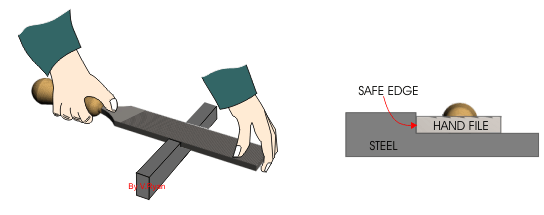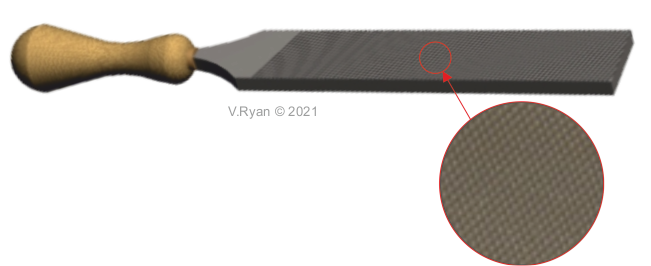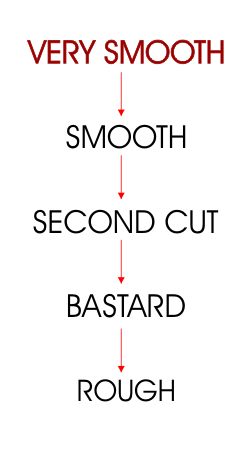| |
| CLICK HERE FOR INDEX PAGE |
| |
| HAND FILES /ENGINEERS FILES - 2 |
| V. Ryan © 2006 - 2021 |
| |
| The safe edge of a file does not have teeth. This is
extremely useful when filing in corners as shown in the diagram below.
The safe edge is placed into the corner and because it is smooth it does
not damage the surface of the metal. |
| |
 |
| |
|
|
| |
| There are many different shapes / sections of files,
some are shown below. They are used for a variety of types of work.
Files are classified according to their length, section / shape and cut
(tooth shape). |
| |
| HAND FILE: Used
for general filing of metals such as steel. They are rectangular in
section and are the most common type of file used in workshops. |
| |
 |
| |
| HALF ROUND FILE: Used for filing curved surfaces. A normal hand file with its flat
cutting edges is unsuitable for filing curved surfaces. However, the
half round file has a curved surface which is especially useful for
filing internal curves. |
| |
 |
| |
 |
| |
| THREE SQUARE FILE: Is triangular in section and very useful when filing ‘tight’ corners /
angles. The sharp edges allow the file to fit into corners when filing. |
| |
 |
| |
 |
| |
|
|
| |
| KNIFE FILE: Knife
files are very useful when filing where there is little space. Knife
files are very thin and can fit into small gaps. |
| |
 |
| |
 |
| |
| SQUARE FILE: The
square file is quite thin and fits into corners well. They can be used
to file slots in metal or for filing where there is little space. |
| |
 |
| |
 |
| |
| Files are often graded according to the roughness /
smoothness of cut. The file that has the least harsh teeth is graded as
‘very smooth’. The most abrasive of files is graded as ‘rough’. Some of
the grades of cut are shown below. |
| |
 |
| |
|
|
| |
 |
| |
| GRADES OF CUT - FILES |
| |
 |
| |
| CLICK HERE FOR EQUIPMENT AND PROCESSES INDEX PAGE |
| |

























